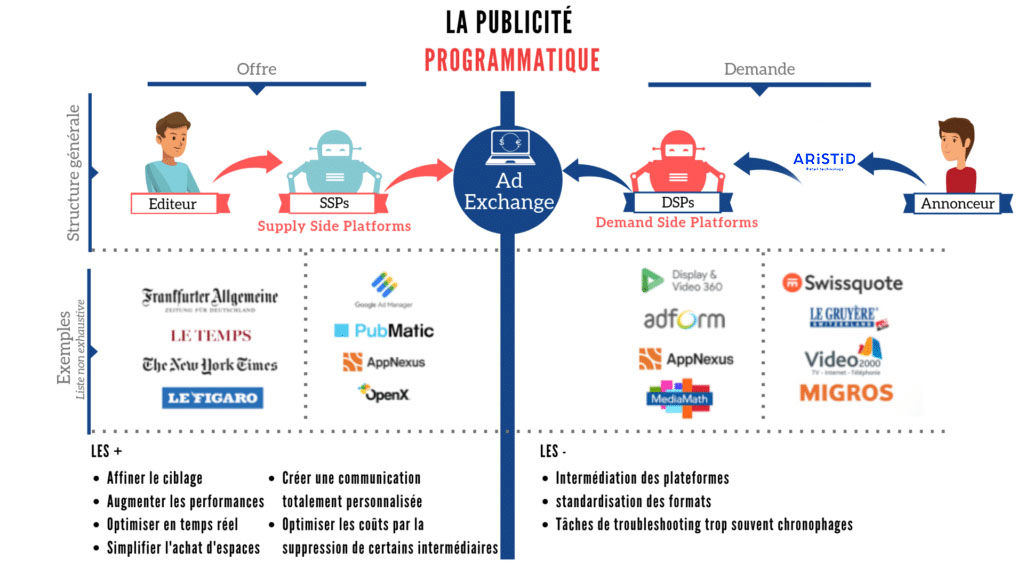source : LSA
THE BENEFITS OF PROGRAMMATIC ADVERTISING
Programmatic advertising has a strong impact on conversions. It is easy to analyze its performance thanks to the concrete results of the data collected. This strategy offers many advantages to advertisers, especially in the retail sector.
How it helps retailers
Precise targeting
Thanks to the use of real-time data and in-depth analysis of user behavior, ads can be delivered to a highly targeted audience, increasing the chances of conversion.
Continuous optimization
Programmatic campaigns can be constantly optimized based on real-world performance. This improves ad effectiveness and optimizes ROI.
Budget control
Advertisers can set strict budgets for their programmatic campaigns, avoiding overspending and maximizing the use of their financial resources.
Performance measurement
Advertisers can evaluate and optimize the performance of their programmatic campaigns using advanced tracking and analysis tools. By setting clear goals and adjusting strategies in real time, the effectiveness of advertising investments is maximized. This approach allows for rigorous performance control, ensuring judicious use of financial resources.
What about traditional advertising?
Traditional advertising targets groups of people that advertisers try to reach by using traditional media such as television, radio, print, and outdoor advertising. This approach is often used by stores with very classic marketing strategies. In this context, determining the target audience operates on a wide range of criteria, including age, gender, geographical location, interests, consumption habits, and even the broadcasting context.
To illustrate this point, consider the ads broadcast during the World Cup matches, focusing on products such as perfumes and men’s care, or security companies. By opting for traditional advertising, the advertiser generally targets as wide an audience as possible. The challenge is quantitative: the goal is not to target the most qualified consumers but to reach a considerable number of people. A notable advantage of traditional advertising is its impact on a varied audience, reaching both children and the elderly. The latter, often less integrated into digital devices, remain sensitive to the power of traditional advertising.
However, the cost associated with this type of advertising remains significant. Campaigns stretch over several weeks or even months and require significant advertising hammering to make their mark. The traditional promotions model has a major drawback: the impossibility of interacting directly with its content. Supporters of traditional advertising must face the constraint of the inability to easily share the content they appreciate with their network.
Programmatic advertising: The future of retail marketing
Programmatic advertising is the future of retail marketing. Thanks to its automated and targeted approach, it offers advertisers a more consistent and effective way to reach their audience. With its many advantages, such as precise targeting, continuous optimization, and budget control, programmatic advertising opens up new opportunities for retail businesses looking to grow their online presence and increase sales. By choosing this innovative approach, retailers stand out and establish their presence in the competitive digital promotion market.
It is much more than just a trend, it is an approach that promises to shape the future of marketing in the retail world, offering unprecedented opportunities to reach the right audience, at the right time, with the right message.

